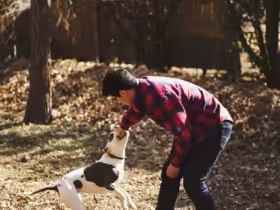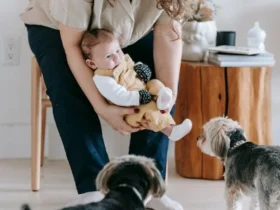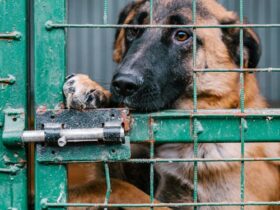Bringing home your first pet is an exciting and life-changing experience. Whether you’re adopting a puppy, kitten, or even an older animal, preparing properly can make the transition smoother and ensure a positive start for both you and your new furry friend. Here are three simple yet essential steps to help new pet parents get ready for their first fur baby.
1. Prepare Your Home
Creating a safe and welcoming environment for your new pet is crucial. This involves setting up your home and ensuring it’s ready for the arrival of your new family member:
a. Pet-Proof Your Space
- Remove Hazards: Go through your home and identify potential dangers for pets. This includes keeping household chemicals, electrical cords, and small objects out of reach. Secure trash cans and remove any items that could be harmful if chewed or ingested.
- Create a Safe Space: Set up a designated area where your pet can feel comfortable and secure. This could be a cozy bed or crate in a quiet part of the house. Make sure it’s free from drafts and has a soft surface for your pet to rest.
- Pet-Proof Furniture: Consider how your pet might interact with your furniture. For instance, if you have a puppy or kitten, you might need to protect furniture legs or cover cords to prevent chewing.
b. Gather Essential Supplies
- Bed and Crate: A comfortable bed and a crate (for training and safety) are essential. Choose a bed that is appropriately sized for your pet and a crate that allows them to stand, turn around, and lie down comfortably.
- Food and Water Bowls: Invest in sturdy, easy-to-clean bowls for food and water. Stainless steel or ceramic bowls are often recommended as they are durable and less likely to harbor bacteria.
- Food and Treats: Purchase high-quality pet food suitable for your pet’s age, size, and dietary needs. Consult with your veterinarian if you’re unsure about the best food for your new pet. Treats should be healthy and used in moderation.
- Toys and Chews: Toys help keep your pet entertained and stimulated. Choose toys that are safe and appropriate for your pet’s age and size. Chew toys can help with teething and dental health.
- Grooming Supplies: Depending on the type of pet you have, grooming supplies may include brushes, combs, nail clippers, and shampoos. Regular grooming is essential for maintaining your pet’s health and comfort.
2. Understand Basic Pet Care
Proper care is essential for your pet’s well-being. Understanding the basics of pet care will help you provide the best possible environment for your new furry friend:
a. Nutrition and Feeding
- Establish a Feeding Schedule: Consistency is key. Set regular feeding times and stick to them. This helps regulate your pet’s digestion and behavior.
- Portion Control: Follow the feeding guidelines on your pet’s food packaging or consult your veterinarian to determine the appropriate portion sizes. Overfeeding or underfeeding can lead to health issues.
- Hydration: Always provide fresh, clean water. Monitor your pet’s water intake and ensure they are drinking enough, especially in hot weather or after exercise.
b. Health and Veterinary Care
- Schedule a Vet Visit: Arrange for a veterinary check-up as soon as possible after bringing your pet home. This will help you establish a health baseline and address any immediate health concerns.
- Vaccinations and Preventatives: Ensure your pet receives all necessary vaccinations and preventative treatments, such as flea, tick, and heartworm prevention. Your veterinarian can guide you on the appropriate schedule and products.
- Spaying/Neutering: Discuss spaying or neutering options with your vet. This procedure helps prevent unwanted litters and can contribute to your pet’s overall health.
c. Training and Socialization
- Basic Training: Start with basic commands like “sit,” “stay,” and “come.” Positive reinforcement techniques, such as treats and praise, are effective for training. Consistency and patience are crucial.
- Socialization: Expose your pet to various people, animals, and environments to help them become well-adjusted and confident. Proper socialization helps prevent behavioral issues and ensures your pet is comfortable in different situations.
- Behavioral Guidance: Address any behavioral issues early on. This could include chewing, barking, or house training problems. Seek professional advice if needed to ensure positive behavior development.
3. Establish a Routine
A consistent routine helps pets feel secure and adapt to their new home more easily. Here’s how to create a routine for your new fur baby:
a. Daily Schedule
- Feeding Times: Stick to regular feeding times to establish a predictable routine. This helps with digestion and creates a sense of stability for your pet.
- Exercise and Play: Set aside time each day for exercise and play. Regular physical activity is essential for your pet’s health and helps prevent boredom and destructive behavior.
- Grooming: Incorporate grooming into your daily or weekly routine, depending on your pet’s needs. Regular brushing, bathing, and nail trimming help maintain your pet’s hygiene and comfort.
b. Bonding Time
- Quality Interaction: Spend quality time interacting with your pet. Whether it’s cuddling, playing, or training, bonding helps build trust and strengthens your relationship.
- Routine Activities: Establish routine activities that you and your pet enjoy together. This could include walks, play sessions, or quiet time. Consistent positive interactions help your pet feel secure and loved.
c. Monitor and Adjust
- Observe Behavior: Pay attention to your pet’s behavior and adjust their routine as needed. If you notice changes in appetite, energy levels, or behavior, consult your veterinarian to address any potential issues.
- Be Flexible: While routines are important, be prepared to adapt as your pet settles in and their needs evolve. Flexibility helps accommodate changes and ensures a happy, healthy life for your pet.
Conclusion
Preparing for your first fur baby involves creating a safe and welcoming home, understanding basic pet care, and establishing a consistent routine. By following these three simple steps, you’ll set the stage for a smooth transition and a positive experience for both you and your new pet. Remember, patience and love are key as you embark on this exciting journey. With proper preparation and care, you’ll enjoy the joy and companionship that comes with having a furry friend in your life.











Leave a Reply